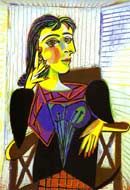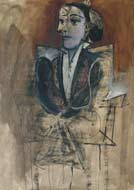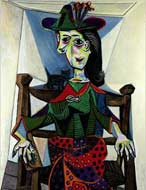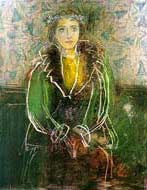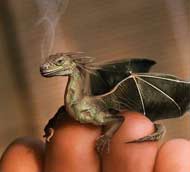News and Site Updates Archive 2010/01/31
Emergencies have always been the pretext on which the safeguards of individual liberty have been eroded.
- Friedrich August von Hayek
31 Jan ' 10 -
 |
The art market is difficult to quantify and even its size is only an estimate (it was thought to be about US$65 billion in 2008). Moreover, how do you assess the price of a painting when four Picasso portraits of Dora Maar (one of Picasso's many mistresses),
all from the 1940s and all of comparable size, sold for between US$4.5 million and $85 million within a 3-year period? I don't know which, if any, of the paintings of Dora Maar
shown below were among those sold at such widely varying prices. But it seems obvious that some of Picasso's paintings of her certainly have lots more appeal than others. It isn't the size of a painting,
nor even its subject matter or even just the identity of the person applying the paint which determines full value.
It seems to me that the more times Picasso painted Dora Maar (many more times than shown here), the less he tried to make her look good. Then he left her for someone else and the cycle
began again. |
|
|
|
|
|
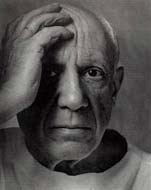 |
Fernande Olivier was Pablo Picasso’s first love; though she was
already married, they were together 9 years. As a jealous lover, he often locked her up when he went out. He eventually left her for Eva Gouel - a short-lived affair due to Eva's death
from tuberculosis. Fernande reportedly lived the rest of her life in sorrow. Olga Koklova, a Russian ballet dancer, was Picasso's first wife. They had a son, then he left her for
a 17-year-old - though he never divorced Olga because he didn't want to divide his wealth with her. She supposedly stalked him for years (perhaps trying to serve him divorce
papers?). Marie-Therese Walter, Picasso's youngest mistress, bore him a daughter, then he left her. She hanged herself after his death (perhaps finally accepting he would never return
to her). Dora Maar, a photographer half his age, was his lover for 7 years - during his Guernica period. (Her features appear in what is likely Picasso's most famous
painting.) Dora became a religious recluse and poet after Picasso left her. Like her predecessors, she was said to suffer mental health problems after Picasso left. Dora was often
portrayed in his paintings as weeping because he said that was "her inner nature." Françoise Gilot met Picasso when she was 23 and he was in his mid 60’s. During their 10-year
relationship, they had a son and daughter. Tiring of abuse and unfaithfulness (in particular with Genevieve
Laporte), she left him, sending Picasso into a deep funk. Jacqueline Roque was the last woman in
Picasso's life. She lived with him for 20 years until he died in 1973. Meanwhile, Françoise sought legal means to legitimize her children with Picasso - so he encouraged her to
divorce her then husband, Luc Simon, so that he could marry her, saying this would secure their rights. After Françoise filed for divorce, Picasso secretly married Jacqueline Roque (he was
then 79 and Jacqueline 35) in order to exact revenge for Françoise leaving him. Françoise later married American researcher-virologist Dr Jonas Salk. Picasso created more works of art
based on Jacqueline than any of his other loves; in one year he painted over 70 portraits of her. After Picasso's death, Jacqueline prevented his children from attending the
funeral. Several years later, Jacqueline shot and killed herself. Apparently Picasso spent his life vacuuming up attractive young women and spewing out expensive paintings. |
The top 10 fears that people have are, in reverse order with the worst last:
Dentists, Dogs, Flying, Thunder and lightning,
Dark, Heights, Other people, Scary places,
Creepy crawlies, and (finally) Snakes

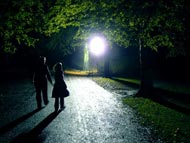 |
Dark: Fear of the dark is common among children and to a varying degree can
still be found in adults. A pathological fear of dark is sometimes called nyctophobia (from the Greek words for night and fear), scotophobia, from the Greek word for darkness, or lygophobia,
from the Greek word for twilight. An apprehension of the dark is different from nyctophobia in the sense that some apprehension is natural whereas nyctophobia is pathological. Fear of dark
is heightened by imagination - it is not fear of absence of light, but fear of possible or imagined dangers concealed by darkness. Nyctohylophobia is fear of dark wooded areas or forests at
night. |
 |
Heights: At 4pm on 3 January, in a residential area of Shanghai, a 50-year-old man jumped from the 6th floor, landing
on a bed of flowers below, and was knocked unconscious. The jumper was sent to the hospital. Residents later said
the man in question jumped as he was holding a young girl; after impacting with the
ground, she was squashed under him, which is why he wasn’t killed. According to eyewitnesses: "Upon seeing that man clutching that woman while jumping, I thought it was a tragic double
suicide. When they landed I heard a loud bang, which sounded like an exploding tyre. As for what woman, well, it was a dressed up inflatable doll, the kind of fake woman made specially for
men to play with. Go figure."
Having a blow up doll in the house is a good idea. When you’ve got nothing to do you can hold it in bed and have some fun. When something’s wrong you can hold it in your arms and jump
out of a window without dying. |
 |
Other People: Anthropophobia is the fear of people or society. 90% of people feel
stage fright when they face the prospect of a public performance. This includes being asked to give a speech, a recital, a dance performance, or performing a role on stage. At the beginning
of one’s career, nearly every public performer reports experiencing stage fright. As performers keep on performing, this begins to diminish. About 20% of people have severe anxiety about
public performance and those usually try to do everything they can to get out of a situation that will put them in the spotlight. Individuals, who experience social anxiety, however, have a
different kind of stage fright. For them, the whole world is a stage and even informal social situations are nothing less than public performances. Meeting and interacting with other people
in an everyday social situation, such as in a work setting, a social club, a concert, et cetera, is like performing under the scrutiny of an audience. For a socially anxious person this audience
is not perceived as a gathering of friends and fans, but of unsparing critics. See "Better Playing through Chemistry" for
a discussion of the ethical considerations of overcoming performance anxiety. |
 |
Scary Places: The former Russian Security Council secretary, Alexander Lebed, said in an interview on 60 Minutes on 9 September 1997, that more than
100 suitcase nukes are missing from the breakup of the Soviet Union. In the first 3 years after the collapse of the Soviet Union, the black market in nuclear weapons and materials began to
boom. Then-secretary of defence Dick Cheney said that recovery of 90% of the nukes in Russia would represent "excellent performance." Such an excellent performance would mean that 220 weapons would have been lost, stolen, or otherwise
unaccounted for. On 11 October 2001, George Tenet, then-director of the Central Intelligence Agency, met with President Bush to convey the news that at least 2 suitcase nukes had reached al
Qaeda operatives within the US. The news sent the president through the roof, prompting him to order his national security team to give nuclear terrorism priority over every other threat to
America. The danger posed by unsecured nuclear material is not just a Russian problem. Enough civilian plutonium for many nuclear weapons exists in Germany, Belgium, Japan, and Switzerland,
and some 20 tons of civilian highly enriched uranium exists at 345 operational and shut-down civilian research facilities in 58 countries, sometimes in quantities large enough to make a bomb. |

Fear of signs?
|
 |
Creepy crawlies: Scorpions don't bother to waste
venom killing a victim if they don't have to. Instead, they use a pre-venom that causes extreme pain, resorting to the deadlier version only when necessary. When first confronted by a
threat, scorpions produce a clear liquid on their stingers. Their more deadly venom, a thick liquid like a milkshake is produced later if the threat continues. It's a clever strategy
because the deadly true venom uses lots of proteins and peptides that are costly for the scorpion to make. Instead, it tries first to get by with a faster-acting and more painful toxin that
doesn't kill, but is easier to make. The first scorpion weapon, the pre-toxin, gets its kick largely from potassium salts that block receptors in animal cells, rapidly causing severe
pain. It's of more than just biological interest that, through evolution, the scorpion has developed a way to generate pain and frighten predators and, if necessary, to follow this with a highly
poisonous peptide toxin. |
 |
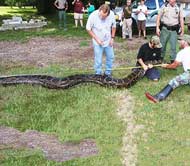 |
Snakes: The discovery of African rock pythons close to the Florida Everglades wetlands is a worrying development for wildlife officers already troubled by
the rising population of Burmese pythons bred from pets dumped illegally in the wild. Should the two species mate, they could create genetically superior offspring more aggressive, powerful and
resilient than their parents — possibly with the ability to strike down even human prey. Rock pythons are so mean they come out of the egg striking - this is one vicious animal. The
arrival of the Burmese python was the biggest, most devastating problem that Florida could ever have imagined - but now they have a worse one. Native to Southeast Asia, Burmese pythons — which
can grow up to 20 feet long and weigh more than 200 pounds — have gained a place in the Everglades in the past decade. Tens of thousands are now believed to prowl south Florida, preying on
native wildlife, including alligators. Now along come their cousins... |
 |
It’s a small daily tragedy that we animals must kill to stay alive. Yet just because we humans can’t hear them
doesn’t mean plants don’t howl when they're killed. Some of the compounds that plants generate in response to insect mastication — their feedback, you might say — are volatile chemicals that
serve as cries for help. Such airborne alarm calls have been shown to attract both large predatory insects like dragon flies, which delight in caterpillar meat, and tiny parasitic insects, which
can infect a caterpillar and destroy it from within. Plants are lively and seek to keep it that way. The more scientists learn about the complexity of plants — their keen sensitivity to
the environment, the speed with which they react to changes in the environment, and the extraordinary number of tricks that plants will rally to fight off attackers and solicit help from afar — the
more impressed researchers become and the less easily we can dismiss plants as so much fiberfill backdrop, passive sunlight collectors on which deer, antelope and vegans can conveniently
graze. Plants forage for resources like light and soil nutrients and anticipate rough spots and opportunities. By analysing the ratio of red light and far red light falling on their leaves,
they can sense the presence of other chlorophyllated competitors nearby and will try to grow in a different direction. Their roots ride the underground rhizosphere and engage in cross-cultural,
chemical, and microbial trade. |
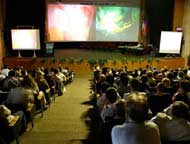 |
When intelligent people make poor decisions: In December 2008, two seemingly
unrelated events occurred: Stephen Greenspan’s book, Annals of Gullibility: Why We Get Duped and How to Avoid It, was released. Greenspan, a professor of psychology, explains why we allow other
people to take advantage of us and discusses gullibility in finance, academia, and law. His book ends with helpful advice on becoming less gullible. Concurrently, Bernard Madoff's Ponzi
scheme, greatest in history (costing unsuspecting investors more than $60 billion), was exposed. In a Ponzi scheme, a manager uses funds from new investors to pay off old ones. Since
there's no legitimate investment activity, it collapses when there are insufficient new victims. Madoff’s scheme unravelled when he couldn’t meet requests for redemptions from investors stung
by the financial meltdown. The irony is that (bright and well regarded) Greenspan lost 30% of his retirement savings in Madoff’s scheme - drawn to investment returns that looked, in retrospect,
too good to be true.
At a conference dealing with spine surgery, a surgeon presented the case of a female patient with a herniated disc in her neck and pain caused by a pinched nerve. She had already failed typical
conservative treatments such as physical therapy, medication, and waiting it out. The surgeon asked the audience to vote on two choices for surgery: the newer anterior approach [the surgeon
removes the entire disc, replaces it with a bone plug, and fuses the discs] versus the older posterior approach [the surgeon removes only the portion of the disc compressing the nerve - no fusion is
required because the procedure leaves most of the disc intact]. The vast majority voted for the first alternative. The speaker then asked the audience (almost entirely male), "What if this
patient is your wife?" The majority then voted for the second alternative. Why? The fee for the newer and more complicated procedure IS typically several times that of the older
procedure... |
|
 |
|
"My short-term goal is to bluff my way through this job interview. My long-term goal is to invent a time machine so I can come back and change everything I've said so
far." |
|
| |
|
 |














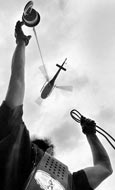
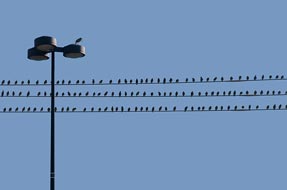
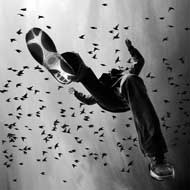
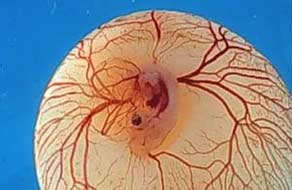

![]()
![]()
![]()
![]()
 Animals
Animals Animation
Animation Art of Playing Cards
Art of Playing Cards Drugs
Drugs Education
Education Environment
Environment Flying
Flying History
History Humour
Humour Immigration
Immigration Info/Tech
Info/Tech Intellectual/Entertaining
Intellectual/Entertaining Lifestyles
Lifestyles Men
Men Money/Politics/Law
Money/Politics/Law New Jersey
New Jersey Odds and Oddities
Odds and Oddities Older & Under
Older & Under Photography
Photography Prisons
Prisons Relationships
Relationships Science
Science Social/Cultural
Social/Cultural Terrorism
Terrorism Wellington
Wellington Working
Working Zero Return Investment
Zero Return Investment



